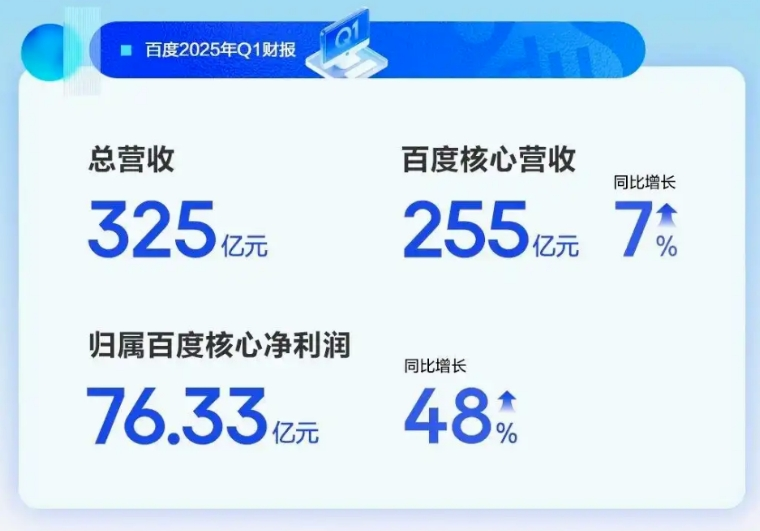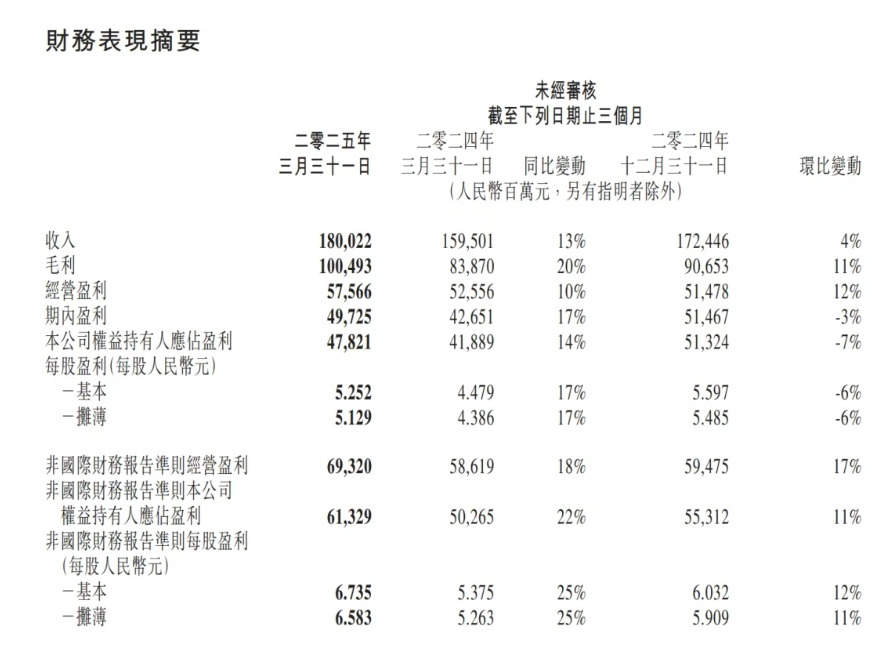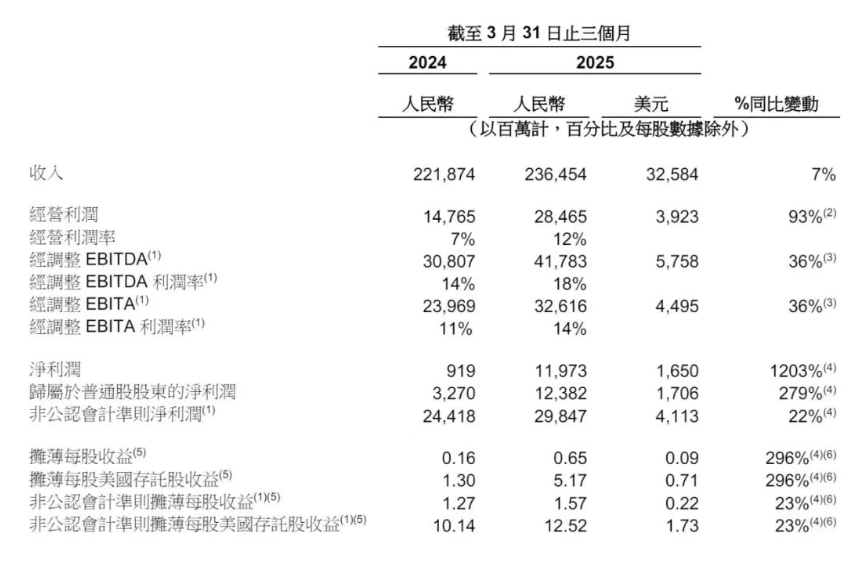AI Reshapes the Futures of BAT: Diverging Paths and Strategic Choices
![]() 07/07 2025
07/07 2025
![]() 462
462
Author|Lin Feixue
Editor|He Kun
Operations|Chen Jiahui
Produced by|LingTai LT (ID: LingTai_LT)
Cover Image|Publicly Available Online
AI represents a trend, a train that all must board. By 2025, this high-speed technological train reaches a pivotal fork in the road.
Some corporations switch tracks at full speed, aiming to redefine the future; others enhance their existing track with new engines; still, others rush to upgrade their dispatching systems, enabling trains to run more efficiently within a complex network.
AI transcends mere tool status; it marks a turning point in corporate evolution. This is no longer a competition of technical specifications but a divergence in growth logic, organizational models, and strategic vision.
BAT, standing at this juncture, heads towards three distinct futures.
AI's Evolution: Diverging Paths
If AI applications in prior years resembled adding an "external plugin" to existing processes, by 2025, this transformation becomes the backbone of corporate development through various strategic choices.
Behind these different paths lie varying organizational philosophies and resource allocations. According to comprehensive media information from Tianyancha, the driver logic emphasizes AI utility, prioritizing efficiency and cost leadership; the central logic focuses on AI's enhancement of system synergy, emphasizing organizational flexibility; and the operating system logic transforms AI into the core language of corporate architecture and ecology, taking a systematic approach to foundational renovation.
This difference reflects not only how these companies perceive AI but also extends naturally from their organizational structures, ecological boundaries, and capital visions. From a strategic perspective, this competition among AI paths resembles a marathon on a three-way fork. It's not about speed but about building the most stable, expansive, and enduring path.
Thus, a map of AI-related enterprises emerges, each with a unique approach.
Baidu constructs "AI city-states," Tencent builds "AI roads," and Alibaba creates "AI skeletons."
Their perspectives on AI dictate how they utilize, organize, and integrate AI.
This is evident in their financial reports. Baidu's Q1 2025 report shows total revenue of 32.5 billion yuan, with core revenue at 25.5 billion yuan, a year-on-year increase of 7%; core net profit increased by 48% to 7.63 billion yuan.

▲Figure: Screenshot of Baidu's Financial Report
Notably, its AI-related business demonstrates robust growth. Official data shows that the intelligent cloud business grew by 42% year-on-year; the price of Wenxin 4.5 Turbo was reduced to 0.8 yuan per million tokens (an 80% decrease from the previous generation), and the price of X1 Turbo was further reduced by 50%, directly driving enterprise AI application penetration.
Tencent Holdings' (00700.HK) Q1 2025 report shows revenue of 180.02 billion yuan, a year-on-year increase of 13%, with gross profit at 100.49 billion yuan, a 20% increase, and operating profit (Non-IFRS) at 69.3 billion yuan, an 18% increase.

▲Figure: Tencent's Q1 Report of 2025
Alibaba's fourth fiscal quarter (April 1, 2024, to March 31, 2025) revenue was 236.454 billion yuan, a year-on-year increase of 7%. Excluding non-GAAP, net profit was 29.847 billion yuan (approximately US$4.113 billion).

▲Figure: Alibaba's Q1 Report of 2025
Analyzing public information reveals that these companies' AI strategies are deepening along different paths. For Baidu, AI is a foundational, general capability akin to an operating system; for Tencent, AI acts as a dispatching hub enhancing system synergy, emphasizing modular ratios, interface integration, and product empathy; while Alibaba aims for AI to drive ecosystem upgrades, rewriting organizational "grammar" across the board.
Thus, the three companies serve as AI infrastructure builders, ecological schedulers, and system reshapers, respectively. Their paths and logics differ, yet they all address the same underlying question: AI is not for display; it's for "integration into the system."
Along the main lines of foundation, system, and engine, how did BAT take different paths and progress further down them?
Who Will Lead the AI-Driven Growth Validation?
The CEOs of these companies also offer profound insights into AI strategies.
For instance, Baidu Chairman and CEO Robin Li stated, "We believe that the AI-first strategy enables us to maintain a leading position and seize long-term growth opportunities in the AI era."
Tencent Chairman and CEO Pony Ma said, "We expect these strategic AI investments to create value for users and society and generate long-term and substantial incremental returns for us."
Alibaba Group CEO Wu Yongming noted, "Our 'user-first, AI-driven' strategy continues to yield results, with core business growth accelerating. We will focus on our core business and promote AI+cloud as our new growth engine for long-term development."
Combining public information to analyze the specific implementations of BAT's AI strategies reveals differing "paving" and "opening" methods.
Baidu's AI strategy resembles systematic infrastructure development. Rather than treating AI as a magical tool, it builds an entire toolchain and platform system. The Wenxin large model family lowers usage thresholds, X1 Turbo enhances training efficiency, and the Qianfan platform connects models with scenarios, akin to an AI "supermarket" where developers can "shop" as needed. This resembles an AI city-state with Baidu as the builder.
The intelligent cloud business powers this city-state. According to Tianyancha and Baidu's Q1 2025 report, the intelligent cloud business performed strongly, with a 42% year-on-year growth rate. Baidu opens the Ren and Du meridians from model development to deployment. The Kunlun chip third-generation 10,000-card cluster serves as a fuel station for this system, making it as convenient for enterprises to train 100 billion parameter models as it is to refuel a car. Baidu paves with computing power, opens roads with platforms, and roots with products.
Tencent follows a different route. If Baidu builds AI city-states, Tencent operates them, focusing on making AI a deliverable and reusable standard capability. Rather than building a rocket to AGI, Tencent provides water, electricity, roads, and networks, turning AI into infrastructure that every citizen and enterprise can use stably.
The Hunyuan large model forms the foundation but is not the core focus. Tencent has nurtured practical AIs for various purposes, such as AI writing, enterprise customer service, health assistants, meeting minutes, and intelligent customer service. The AI butler Yuanbao, like a service robot, evolves daily, integrates into the WeChat ecosystem, and precisely targets users' most common entry points.
Alibaba's chosen path is neither city-building nor road-building but engine upgrading. AI becomes the new logic governing the entire platform's operation.
On the consumer side, the Tongyi App, under the Quark business group, transforms from a search product to an AI Agent. On the business side, DingTalk becomes smarter, not just AI-enhanced. Crucially, at the cloud level, Alibaba attempts to shift from "selling computing power" to "selling intelligence." With the Tongyi large model, Alibaba Cloud automates product selection, marketing, and decision-making, redefining value "beyond computing power."
In terms of models, Alibaba presents a logic of open-sourcing Qwen3 and building an AI ecological flywheel based on it. The model is not the end goal; business integration is the focus.
These companies have bet on different growth engines, portraying three distinct future enterprise paradigms. Growth is no longer merely a numbers game but a natural extension of path selection. Similarly, AI ultimately becomes the "subject" of the entire enterprise, not just a part of its business.
The first to pass the AI-driven growth validation period may become the paradigmatic sample of the next generation of technology enterprises.
This Is Not Just a BAT Story
While Baidu builds an AI base, Tencent weaves an ecological system, and Alibaba upgrades its driving engine, they demonstrate three distinct AI implementation models for the entire industry. This technological transformation is already unfolding across industries, enterprises, and organizations.
If AI represents a great migration that will change the backdrop of productivity, the choice of vehicle, route, and foundation determines an enterprise's reach, endurance, and ability to weather storms.
From chips to models, from platforms to ecosystems, Baidu's approach emphasizes systematic deployment rather than punctual breakthroughs. This demands significant resources, technology, and time but, once completed, acts as a power plant continuously supplying energy to the entire industrial chain.
This path suits industries inherently systematic, such as urban infrastructure, energy dispatch, industrial manufacturing, autonomous driving, and enterprise software services.
For ToB vendors where customers buy integrated solutions rather than individual products, Baidu's AI approach may serve as a benchmark.
This approach is tailored for industries with deep supply chains, complex deliveries, and processes where one change impacts the whole.
Tencent's AI strategy resembles building urban supporting facilities. It's not about building the tallest building but ensuring water, electricity, networks, and roads reach every floor. It's not about parameter competition but asking, "Is your business using it?"
This path suits industries with mixed ToC and ToB models, driven by product logic, such as gaming, e-commerce, social media, pan-entertainment, smart hardware, education and training, marketing and advertising, and knowledge platforms.
These enterprises face rapidly changing applications and prioritize user experience. The focus is not model depth but timely AI insertion, removal, and iteration. You can view Tencent's approach as LEGO bricks for AI applications: convenient, standardized, timely updated, and versatile.
If you're a content platform, tool manufacturer, or consumer goods enterprise, your AI path should mirror Tencent's, starting with usability, progressing to ease and frequency of use, and ultimately becoming a user-essential default configuration.
Alibaba's choice resembles building an AI engine upgrade machine, not optimizing the existing system but reconstructing organizational structure, business processes, and product positioning from the ground up.
This path suits enterprises undergoing significant transformations, such as channels transitioning to platforms, hardware brands shifting to services, new retail players moving from distribution to direct sales, and B-end enterprises evolving from selling products to selling solutions, systems, and intelligence.
This is a rewrite where AI becomes culture, transforming not just tools but also thinking and working methods.
Different paths dictate different speeds of corporate evolution.
Technically, AI route selection involves permuting and combining parameters, frameworks, and costs. Organizationally, it's a choice of corporate self-positioning and evolution methods.
Path selection doesn't depend on AI popularity but on organizational type, ecological stickiness, and evolutionary goals.
Each step taken by BAT finds a counterpart in the industry. This is not just a technological revolution but a revolution in corporate self-definition.
AI is not omnipotent, but there are diverse paths. Where you place it determines its ultimate impact. Standing at this AI fork in the road, every enterprise must ask: Do I want to connect a wire or upgrade an engine?
Written at the End
The divergent paths taken by Baidu, Tencent, and Alibaba in AI signify more than just a choice of technical strategies; they represent a fundamental self-definition of each company's core identity. These titans are no longer vying to be carbon copies of one another; instead, they are leveraging AI as a lens to illuminate three distinct visions for the future form of enterprises. Some are laying the groundwork, others are weaving intricate systems, and still others are upgrading their engines.
The crux of the difference lies in the distinction between "doing things with AI" and "accomplishing things through AI." The former represents a mere instrumental rationality, while the latter heralds a paradigm shift. Those who successfully integrate AI into the very fabric of their organizations will be positioned to wield narrative control and establish the rules of engagement in this new era.
In the AI era, the race is not about who sprints the fastest; it's about who constructs the framework that best adapts to the evolving landscape. Speed may secure a fleeting advantage, but it is strategic growth that ensures long-term success.
The winds of change have shifted, and the destination is within sight.








